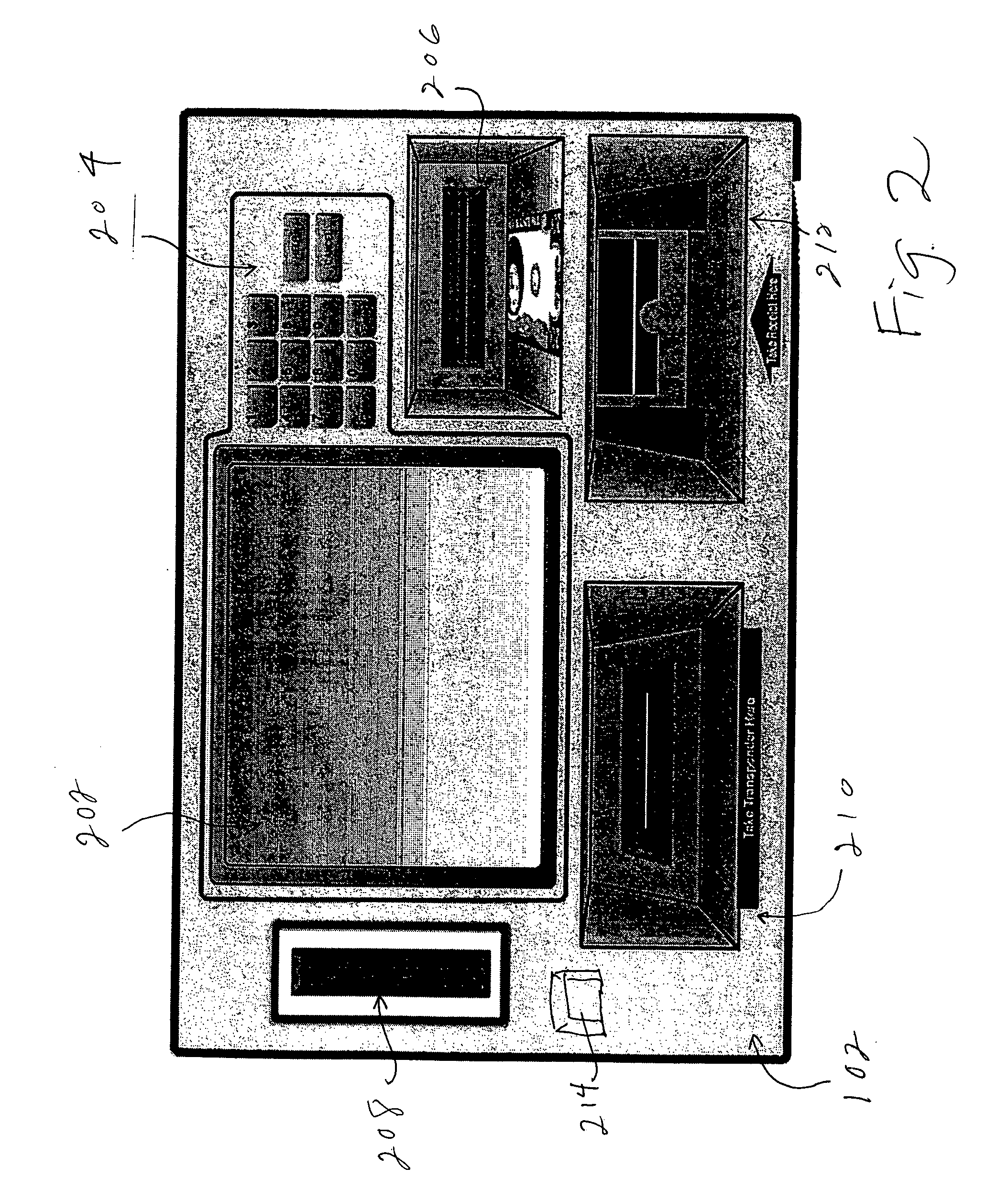Self-service electronic toll collection unit and system
a self-service, electronic technology, applied in the direction of instruments, data processing applications, commerce, etc., can solve the problems of imposing a cost on the toll authority, inconvenient current operations for cash-paying customers, and limited ability of toll authorities to move to electronic toll collection, etc., to achieve efficient customer service, reduce current operating costs, and expand the effect of electronic collection
- Summary
- Abstract
- Description
- Claims
- Application Information
AI Technical Summary
Benefits of technology
Problems solved by technology
Method used
Image
Examples
Embodiment Construction
[0065] A preferred embodiment of the present invention will be set forth in detail with reference to the drawings, in which like reference numerals refer to like elements throughout.
[0066]FIG. 1 shows an exterior perspective view of a kiosk 100 according to the preferred embodiment. The kiosk configuration shown in FIG. 1 is illustrative rather than limiting; as noted above, other configurations, such as through-the-wall and drive-up models, are possible within the scope of the present invention. FIG. 2 shows a head-on view of a user interface panel 102 of the kiosk 100.
[0067] The user interface 102 is based on a screen 102, which can be a 15-inch LCD display with an integrated touch-screen keypad. A separate keypad 204 can be provided instead of, or in addition to, the integrated touch-screen keypad. Of course, other screens can be used instead, such as the cathode-ray tubes common in automatic teller machines.
[0068] The user interface 102 includes one or more (preferably more) ...
PUM
 Login to View More
Login to View More Abstract
Description
Claims
Application Information
 Login to View More
Login to View More - R&D
- Intellectual Property
- Life Sciences
- Materials
- Tech Scout
- Unparalleled Data Quality
- Higher Quality Content
- 60% Fewer Hallucinations
Browse by: Latest US Patents, China's latest patents, Technical Efficacy Thesaurus, Application Domain, Technology Topic, Popular Technical Reports.
© 2025 PatSnap. All rights reserved.Legal|Privacy policy|Modern Slavery Act Transparency Statement|Sitemap|About US| Contact US: help@patsnap.com



